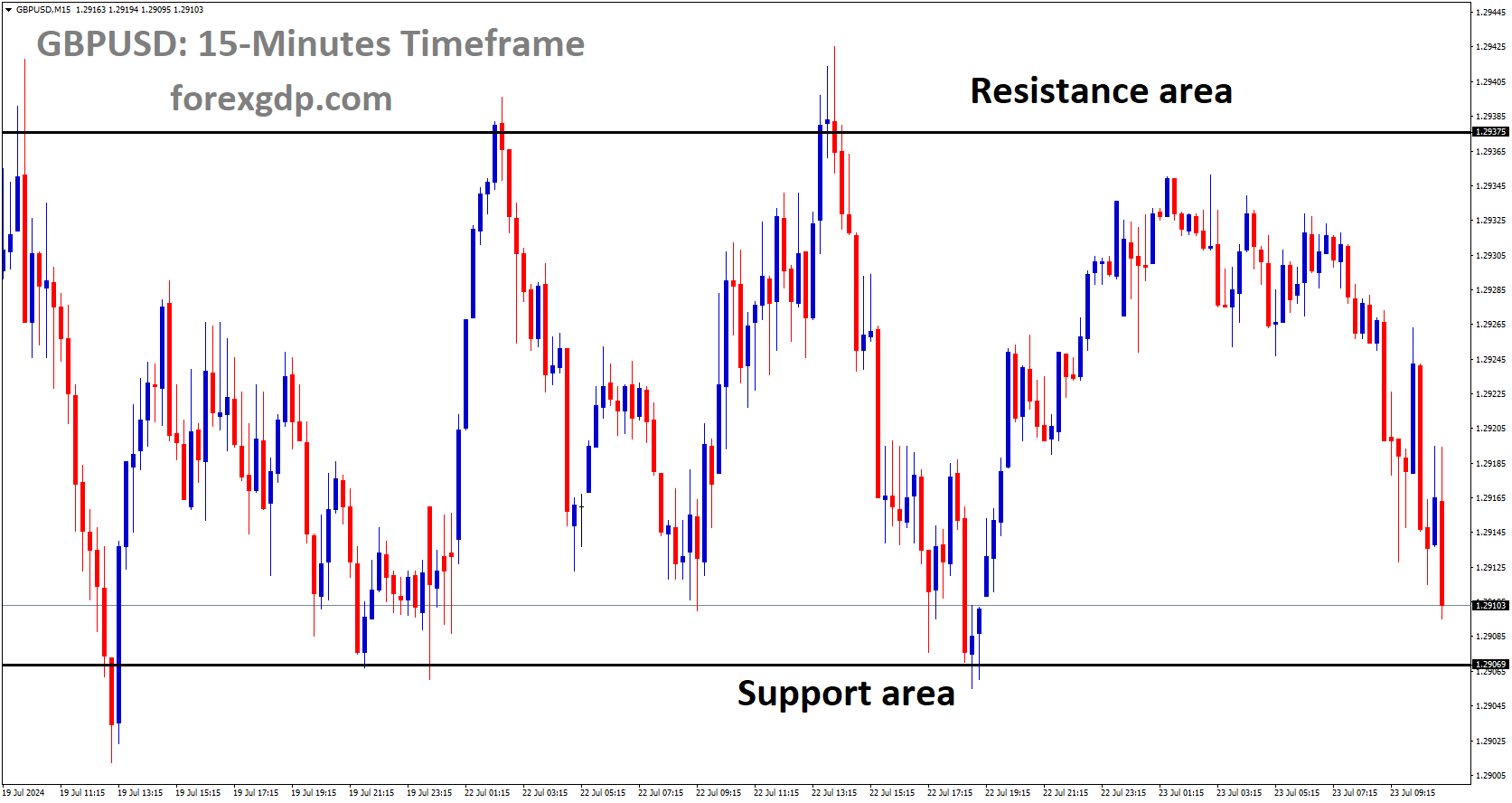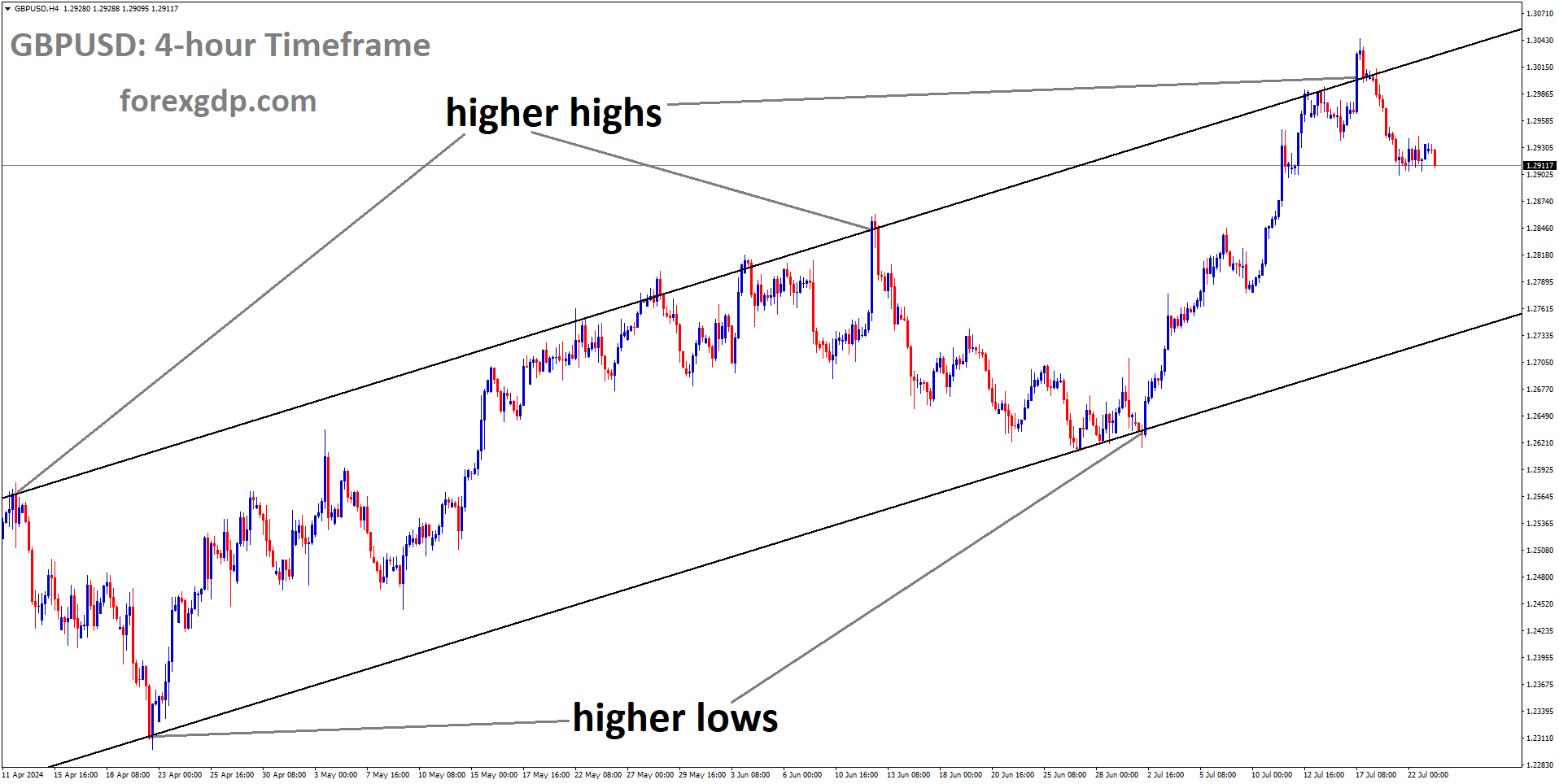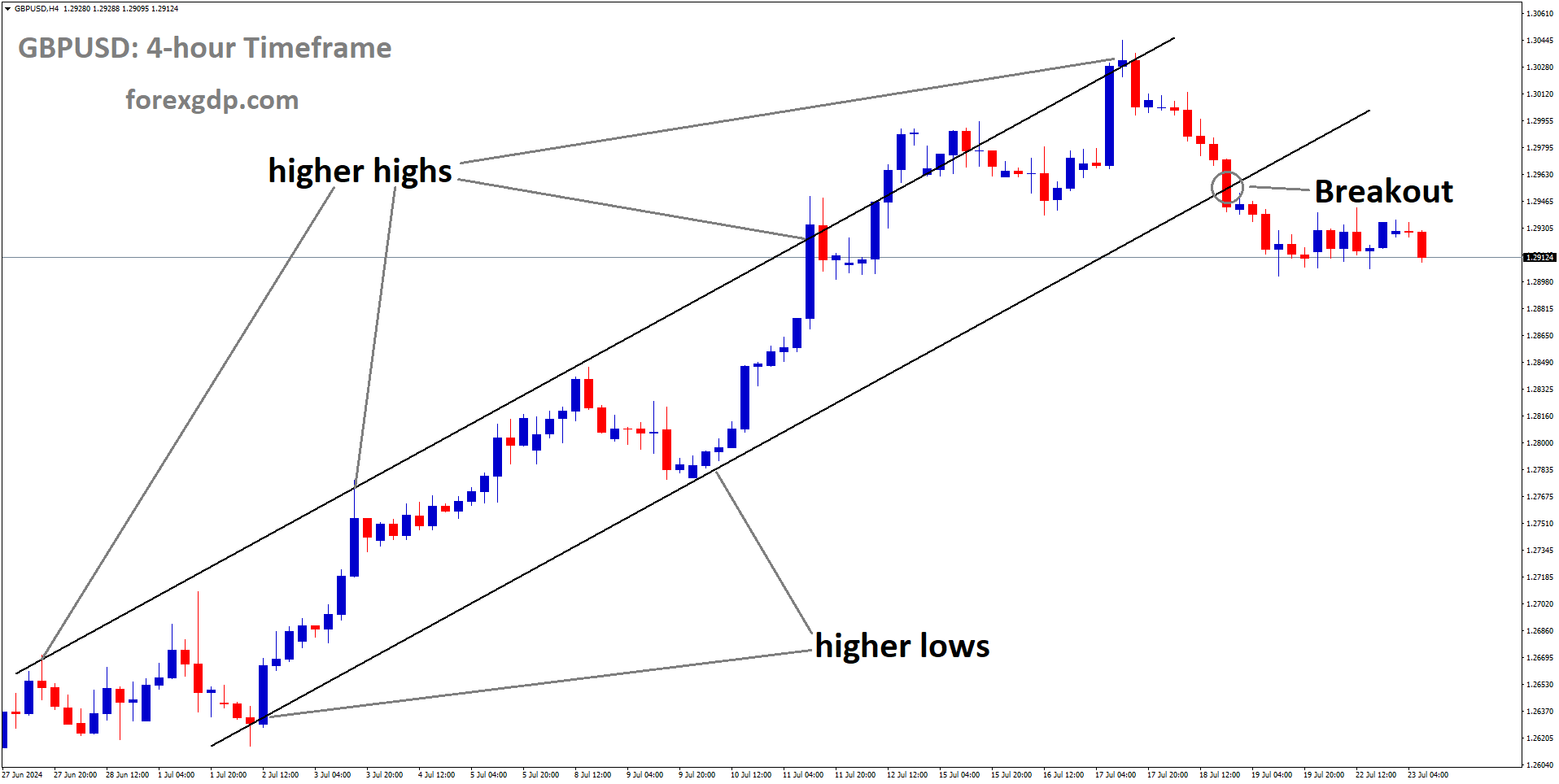GBPUSD is moving in box pattern and market has fallen from the resistance area of the pattern
The Pound Sterling Falls Against the US Dollar: What’s Happening?
The Pound Sterling (GBP) has recently experienced a significant drop against the US Dollar (USD). This shift has caught the attention of investors and traders alike. So, what exactly is going on? Let’s dive into the details and explore the factors influencing this movement.
Weak UK Retail Sales and BoE Rate-Cut Bets
One of the primary reasons for the decline in the Pound Sterling is the weak UK Retail Sales data. Retail sales are a crucial indicator of economic health, and a drop in these numbers often signals trouble. In June, the UK Retail Sales report showed that receipts at retail stores unexpectedly contracted by 0.2% year-over-year. This was a surprise, as analysts had expected growth at a similar pace. On a monthly basis, Retail Sales declined by a faster-than-expected 1.2%.

This weak retail performance has led to increased speculation that the Bank of England (BoE) might cut interest rates in its upcoming meeting in August. Higher interest rates have already squeezed consumer pockets, and the central bank might look to provide some relief. The deceleration in wage growth has further fueled these expectations. Although wage growth has slowed, it remains higher than what the BoE considers necessary to boost confidence in rate cuts.
Implications of Rate Cuts
Interest rate cuts generally aim to stimulate economic activity by making borrowing cheaper and encouraging spending. However, they can also weaken the national currency. In this case, the anticipation of BoE rate cuts has contributed to the Pound Sterling’s decline against the US Dollar.
US Economic Data and Fed Rate Decisions
Meanwhile, across the Atlantic, investors are eagerly awaiting key economic data from the US. This includes the preliminary S&P Global Purchasing Managers Index (PMI) for July, Q2 Gross Domestic Product (GDP), Durable Goods Orders, and the Personal Consumption Expenditures (PCE) Price Index data for June. These data points could offer fresh insights into when the US Federal Reserve (Fed) might start reducing interest rates this year.
GBPUSD is moving in Ascending channel and market has fallen from the higher high area of the channel
Economists expect the Manufacturing PMI to show a slight increase, indicating a nominal expansion in manufacturing activities. The Services PMI, which measures activities in the service sector, is projected to expand at a slower pace compared to the previous month.
According to the CME FedWatch tool, there is growing anticipation that the Fed might begin lowering its key borrowing rates in its September meeting, with potential further cuts in November or December. These expectations are keeping the US Dollar relatively strong, adding pressure on the Pound Sterling.
Global Market Movements
The Pound Sterling’s weakness isn’t just limited to its performance against the US Dollar. It has also weakened against other major currencies, except for the Australian Dollar (AUD) and the New Zealand Dollar (NZD). Both of these currencies have been impacted by their strong economic ties with China, which is currently facing economic challenges. Weaker-than-expected GDP growth in China has raised concerns about the global economic outlook, affecting currencies linked to its performance.
GBPUSD has broken Ascending channel in downside
Focus on UK PMI Data
Looking ahead, the next major trigger for the Pound Sterling will be the UK preliminary S&P Global/CIPS PMI data for July. Scheduled for release on Wednesday, this report is expected to show that the Manufacturing PMI expanded at a faster pace, while the Composite PMI is also projected to have increased. Positive data here could provide some support for the Pound Sterling, although the overall impact will depend on the broader economic context and market sentiment.
Final Summary
In summary, the Pound Sterling’s recent decline against the US Dollar is primarily driven by weak UK Retail Sales and increased speculation of BoE rate cuts. On the other hand, strong US economic data and expectations of Fed rate cuts are supporting the US Dollar. Investors and traders are closely monitoring upcoming economic reports from both the UK and the US, which will likely shape the near-term direction of these currencies. For now, the market remains cautious, balancing between the potential for economic stimulus through rate cuts and the ongoing economic uncertainties.
Understanding these dynamics can help you navigate the forex market more effectively. Keep an eye on the latest economic data releases and central bank announcements, as they will play a crucial role in shaping currency movements in the coming weeks.
Don’t trade all the time, trade forex only at the confirmed trade setups
Get more confirmed trade signals at premium or supreme – Click here to get more signals , 2200%, 800% growth in Real Live USD trading account of our users – click here to see , or If you want to get FREE Trial signals, You can Join FREE Signals Now!








